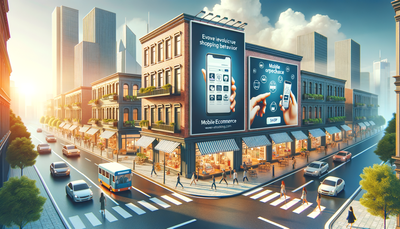Designing an eCommerce Website That Converts: Best Practices and Tips
In the competitive world of eCommerce, having a well-designed website that converts visitors into customers is crucial for success. This article delves into the best practices and tips for designing an eCommerce website that maximizes conversion rates. We'll explore key design principles, including layout optimization, color psychology, and user experience best practices. By implementing these strategies, online store owners can create a visually appealing and user-friendly website that not only attracts potential customers but also guides them smoothly through the purchasing process. Whether you're launching a new online store or looking to improve an existing one, these insights will help you create a high-converting eCommerce website that stands out in the digital marketplace.Table of Contents:
-
The Importance of First Impressions
- Optimizing Website Layout for Conversions
- Leveraging Color Psychology for Higher Conversions
- Enhancing User Experience with Responsive Design
- Simplifying the Checkout Process
- Utilizing High-Quality Product Images and Descriptions
- Implementing Social Proof and Trust Signals
- Optimizing Website Layout for Conversions
- Leveraging Color Psychology for Higher Conversions
- Enhancing User Experience with Responsive Design
- Simplifying the Checkout Process
- Utilizing High-Quality Product Images and Descriptions
- Implementing Social Proof and Trust Signals

The Importance of First Impressions
When it comes to eCommerce websites, first impressions are everything.Your homepage is often the first point of contact for potential customers, so it needs to make a strong impact.
Ensure that your homepage clearly communicates your brand identity, showcases your best-selling products, and provides easy navigation to different categories.
Use high-quality images and concise, compelling copy to grab visitors' attention and entice them to explore further.
Additionally, incorporate a prominent search bar and clear calls-to-action (CTAs) to guide users towards their desired products or actions.
Remember, a clean and visually appealing design can significantly reduce bounce rates and encourage visitors to stay on your site longer, increasing the likelihood of conversions.
Do you need a website? Want to build a website but don't know where to start? Our website builder is the perfect solution. Easy to use, and with the ability to customize to fit your business needs, you can have a professional website in no time.
Optimizing Website Layout for Conversions
The layout of your eCommerce website plays a crucial role in guiding visitors towards making a purchase.Implement a logical and intuitive navigation structure that allows users to easily find what they're looking for.
Use a grid-based layout to organize products neatly and consistently across your site.
Place important elements, such as add-to-cart buttons and product information, in prominent positions where they're easily noticeable.
Utilize white space effectively to prevent clutter and help important elements stand out.
Consider implementing a sticky header with essential navigation and search options to improve user experience as they scroll through your pages.
By optimizing your layout, you can create a seamless browsing experience that guides visitors naturally towards conversion points.
Leveraging Color Psychology for Higher Conversions
Colors have a powerful impact on human emotions and behavior, making color psychology a valuable tool in eCommerce design.Choose a color scheme that aligns with your brand identity and evokes the desired emotional response from your target audience.
Use contrasting colors to make important elements like CTAs stand out.
For example, orange and green are often associated with action and can be effective for buttons.
Blue can convey trust and security, making it suitable for checkout processes.
Red can create a sense of urgency and is often used for sale items or limited-time offers.
However, be cautious not to overuse bright colors, as this can overwhelm visitors.
Strike a balance between your brand colors and strategic use of accent colors to guide users' attention and encourage desired actions.
Building a website with SITE123 is easy
Enhancing User Experience with Responsive Design
With the increasing use of mobile devices for online shopping, responsive design is no longer optional for eCommerce websites.Ensure that your website looks and functions seamlessly across all devices, including smartphones, tablets, and desktops.
Optimize images and content for faster loading times on mobile devices.
Implement touch-friendly navigation and buttons for mobile users.
Consider using a 'mobile-first' approach when designing your website, focusing on the essential elements that mobile users need.
This approach can help streamline your design across all devices and improve overall user experience.
Remember, a positive mobile experience can significantly impact your conversion rates, as many users prefer to browse and make purchases on their mobile devices.
Simplifying the Checkout Process
A complicated or lengthy checkout process is one of the primary reasons for cart abandonment.Streamline your checkout process to make it as quick and easy as possible for customers to complete their purchase.
Implement a progress indicator to show customers how far they are in the checkout process.
Offer guest checkout options for those who don't want to create an account.
Minimize the number of form fields required and use auto-fill where possible.
Provide multiple payment options to cater to different customer preferences.
Include trust signals such as security badges and customer reviews throughout the checkout process to reassure customers.
By simplifying the checkout process, you can reduce cart abandonment rates and increase conversions.
Utilizing High-Quality Product Images and Descriptions
In the absence of physical interaction, high-quality product images and detailed descriptions are crucial for convincing customers to make a purchase.Invest in professional product photography that showcases your items from multiple angles.
Implement zoom functionality to allow customers to see product details up close.
Consider using 360-degree views or short videos to provide a more comprehensive look at your products.
Pair these visuals with clear, concise, and informative product descriptions that highlight key features and benefits.
Include important details such as dimensions, materials, and care instructions.
Use bullet points to make information easily scannable.
By providing comprehensive product information, you can build trust with potential customers and reduce the likelihood of returns due to unmet expectations.
Implementing Social Proof and Trust Signals
Building trust is essential for converting visitors into customers, especially for new or lesser-known eCommerce stores.Incorporate various forms of social proof throughout your website to build credibility and encourage purchases.
Display customer reviews and ratings prominently on product pages.
Showcase testimonials from satisfied customers on your homepage or dedicated testimonial page.
Use trust badges to highlight your security measures and any industry certifications.
Display logos of well-known brands you work with or media outlets that have featured your products.
Consider implementing a live chat feature to provide immediate customer support and build trust through real-time interactions.
By leveraging social proof and trust signals, you can alleviate potential customers' concerns and increase their confidence in making a purchase from your store.





